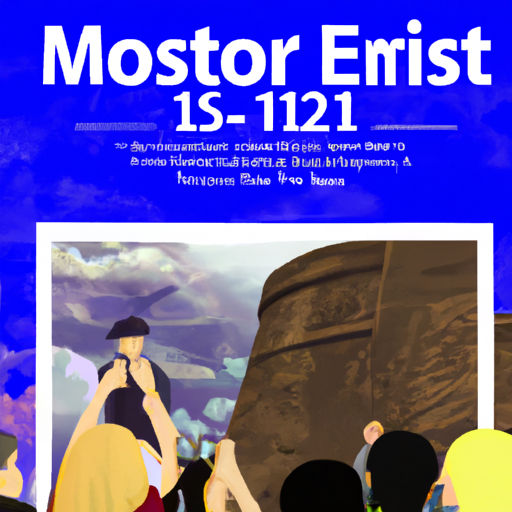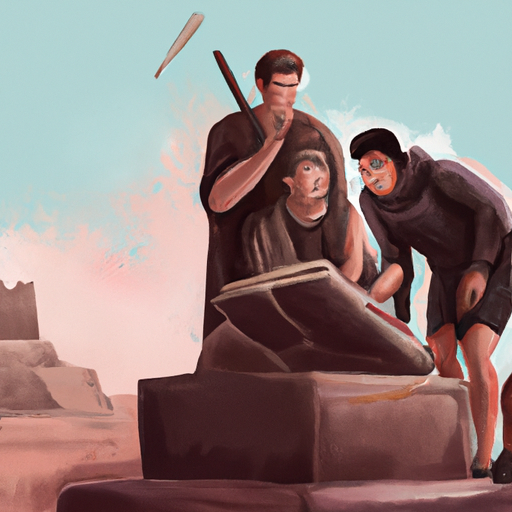A Look into the History of the God of Death
Delve into the past and uncover who has been the deity of death through time! Unearth the secrets behind this mysterious topic and discover its legacy! Take a journey through antiquity and uncover what lies beneath the surface. Uncover who has held dominion over life’s ultimate fate.
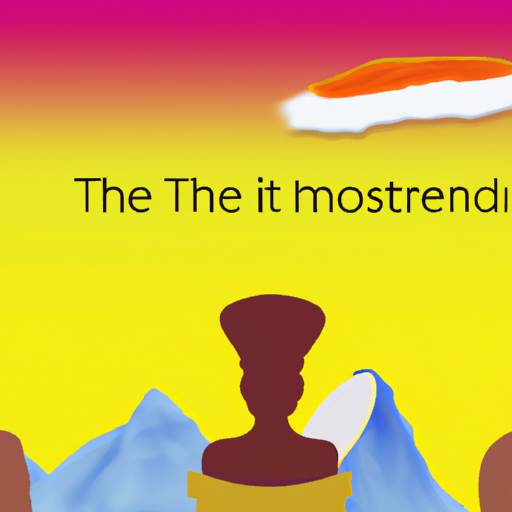
From times long forgotten to the present day, death has been a source of fascination and uncertainty. Different societies have had their own unique conceptions of who or what was responsible for death, from gods and goddesses in ancient Egypt and Greece to powerful spirits in the Aztec culture.
Religions around the world have formulated theories about what happens after we die, with many believing that souls are judged by a higher being before entering an afterlife or reincarnating into another life. In more recent times, some have embraced the idea of an afterlife without necessarily subscribing to any one religion or deity. Others may accept death as a natural part of life’s cycle, not something that is predetermined by a higher power.
Exploring the history of death can provide insight into how different cultures have viewed mortality throughout time. It can also help us gain perspective on our own views about death, reminding us that it is ultimately out of our hands.
.
Introduction
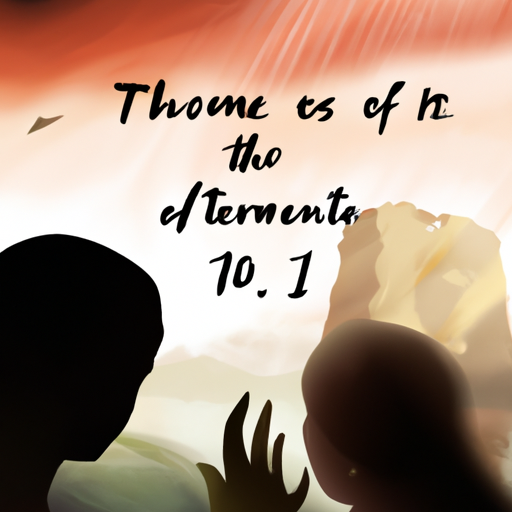
Throughout the ages, various beliefs and faiths have embraced the notion of a deity that presides over the final destination of mortal souls. In Egypt, Osiris was venerated as the god of death and the afterlife, while Anubis presided over mummification and embalming. Hinduism honors Yama as lord of death, whereas Norse mythology holds Hel to be ruler of the underworld. Christianity’s view is that Jesus Christ will ultimately decide where each soul goes after death, acting both as savior and judge.
– Historical Origins of the God of Death
Mysteriously shrouded in the mists of time, the concept of a God of Death has been present in many ancient societies. From Mesopotamia to Egypt, India and beyond, death was seen as a natural part of life and gods were often connected with it. Nergal, Anubis and Yama are just some of the deities that have been associated with death throughout history.
In Christianity, Satan is often linked to death while Buddhism has Māra – a being who tempts people away from enlightenment and towards suffering. Hinduism also has Lord Shiva who is sometimes referred to as “the Destroyer” due to his role in ending cycles of existence.
It appears that no matter what culture or religion you look at, there remains an inherent understanding that death is an inevitable part of life – something that must be accepted rather than feared or denied.
– Ancient Myths and Legends about the God of Death
Mysterious and awe-inspiring, the concept of a deity controlling life and death has been present in human history for centuries. From the Greek god Hades to modern interpretations, the figure of the god of death has always held a certain fascination.
In Greek mythology, Hades is portrayed as a powerful ruler with an unquenchable thirst for power, who kidnapped Persephone from her mother Demeter in order to make her his queen. In Norse mythology, Hel was believed to be the daughter of Loki and Angrboda; she was said to rule over those who died from sickness or old age in her kingdom called Helheim. Depicted as half living and half dead with a pale complexion and long white hair, it was believed that those who entered her realm would never return alive. Hinduism also has its own version of a god of death; Yama is known as the lord of justice in life and after life. He is often seen riding on a black buffalo or holding a staff made out of bones, judging all souls when they cross over into the afterlife.
Whatever form it takes, this powerful figure continues to captivate our imaginations, leaving us wondering what lies beyond our mortal lives.
– Religious Beliefs Surrounding the God of Death
The mysterious and awe-inspiring power of the God of Death has been venerated by many cultures throughout history. From a fearsome, reaper-like figure who ushers people to the afterlife, to a compassionate guide who helps souls find their final resting place, this deity has been seen in many different ways.
In ancient Egypt, Osiris was believed to be the God of Death and resurrection. He was said to judge each soul upon its arrival in the afterlife and decide whether it should be granted eternal life or sent to an underworld realm. The Egyptians also believed that Osiris could bring people back from the dead if they were deemed worthy.
Hinduism also has its own version of a death god: Yama is ruler of Naraka (the Hindu version of Hell). He is sometimes depicted as a skeletal figure riding on a buffalo and carrying a noose made from his own hair. Yama’s role is to judge each soul’s deeds in life and decide whether they should be rewarded with eternal bliss or punished in Naraka.
In Norse mythology, Hel is both goddess and ruler of Helheim (the Norse version of Hell). She was said to have been born from Loki’s union with Angrboda, a giantess. According to legend, she had half her body white and half her body blue—representing life and death respectively—and would make judgments about which souls belonged in Helheim based on their deeds during their lifetime.
Throughout history, these various interpretations of the God of Death have revealed how different cultures view death—from something feared and loathed, to something respected and accepted as part of life’s natural cycle.
– Cultural Representations of the God of Death in History
Throughout the ages, a variety of forms have been taken by the God of Death in different societies. In ancient Egyptian civilization, Anubis was venerated as the deity of death and embalming, usually illustrated as a man with a jackal head. This representation is thought to be inspired by the abundance of jackals in Egypt and their link to graveyards. In Greek mythology, Hades is linked with death and the underworld; he is normally portrayed as an elderly man having a beard and wearing dark clothing.
In Hinduism, Yama is seen as the god of death who controls moral law and justice. He is typically depicted as a dark-skinned person riding on a buffalo or clutching a mace or rope in order to bring souls before him for judgement. In Norse mythology, Hel is known as the goddess of death who rules over Niflheim and Nastrond’s realms. She is generally described as having half her body living and half her body dead, embodying both life and death.
The portrayal of the God of Death has differed drastically between cultures throughout time; nevertheless, one thing remains constant: death is unavoidable and must be respected.
– The Evolution of the Role of the God of Death Throughout History
Throughout the ages, the notion of a God of Death has been altered drastically. In ancient times, death was often seen as an inherent part of life, and gods were venerated to facilitate the transition between life and death. As cultures progressed, so did the role of death gods. In certain societies, such as Ancient Egypt, death gods were linked to control over life and death; they were thought to be able to determine who would live or die, with their decisions being unquestioned.
In other civilizations, like those in Mesoamerica, death gods were perceived as more compassionate characters. They were viewed as guides for souls on their voyage from life to death. The Mayans believed that the God of Death could provide protection and guidance for souls during their journey into the afterlife – a concept still present in many modern religions today.
The idea of a god of death has also been used to explain natural disasters or plagues throughout history. Sometimes a god was blamed for causing these events in order to punish humans for their wrongdoings or lack of faith – a belief still seen today in some cultures where natural disasters are attributed to divine punishment rather than scientific explanations.
The role of the God of Death has changed dramatically over time and continues to evolve even now. In most modern societies it is no longer associated with terror or apprehension but instead regarded as a way to honor those who have passed away and rejoice in their lives instead of grieving their deaths. No matter how it is interpreted though, it is clear that the concept of a God of Death has played an essential role throughout history and will continue to do so for centuries ahead.
conclusion
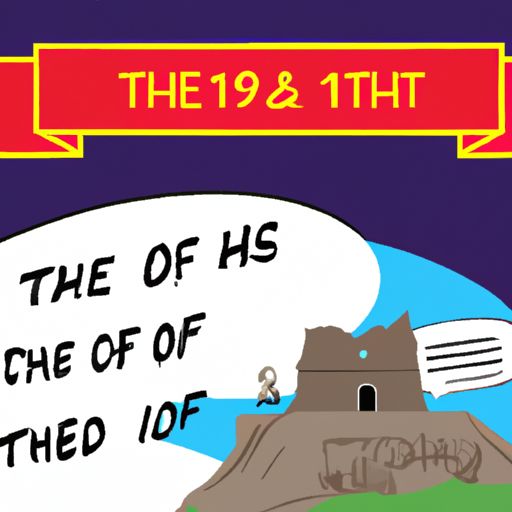
Throughout the ages, a plethora of deities have been linked to the enigmatic realm of death and its aftermath. In Egyptian mythology, Osiris is venerated as the deity of death and reawakening; Hades in Greek mythology is seen as the sovereign of the underworld; Yama in Hinduism is accorded the title of lord of death; Hel in Norse mythology is attributed with being a goddess associated with death; and Izanami in Japanese mythology is recognized as a goddess of creation and demise.
.
Some questions with answers
Q1. Who is the god of death in history?
A1. In many cultures and religions, the god of death is often referred to as a Grim Reaper or Angel of Death.
Q2. What are some other names for the god of death?
A2. Other names for the god of death include Hades, Mictlantecuhtli, Mot, Thanatos, Anubis, Yama, and Hel.
Q3. What role does the god of death play in history?
A3. The god of death has been seen as a figure that brings balance to life by reminding people that life is finite and that death is inevitable.
Q4. How has the concept of a god of death changed over time?
A4. Over time, the concept of a god of death has become less fearful and more associated with peace and acceptance. In some cultures, it is even seen as a symbol for transformation and renewal.
Q5. Are there any modern interpretations of the god of death?
A5. Yes, many modern interpretations exist today such as depictions in books, movies, television shows, video games, and artwork which often portray the god of death in a more positive light than traditional interpretations.




